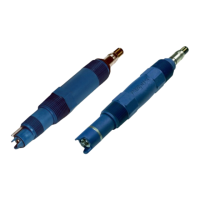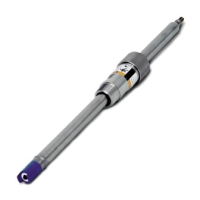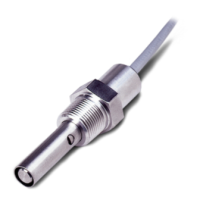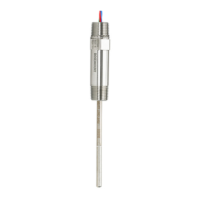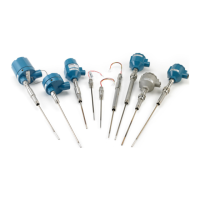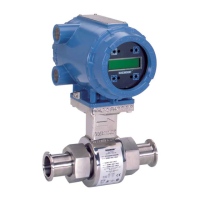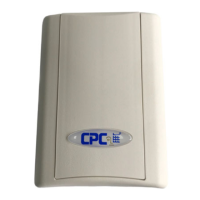45
Reference Manual
00809-0100-4804, Rev CB
Operation and Maintenance
November 2016
Operation and Maintenance
4.3.2 P
HI
and P
LO
sensor calibration
Each pressure sensor in the Rosemount 3051S ERS System can be individually calibrated. The calibration
trim functions for both pressure sensors can be accessed by connecting to the entire ERS System with a
Field Communicator or AMS
™
Device Manager as shown in Figure 2-10, Figure 2-11, and Figure 2-12. It is
recommended to zero trim P
HI
and P
LO
at initial installation to remove any mounting position effects.
While not mandatory, full calibration (upper and zero trims) can eliminate any stability error.
Zero trim
A zero trim is a single-point offset adjustment. It is useful for compensating for mounting position effects
and is most effective when performed after the transmitter is installed in its final mounting position.
Note
The pressure reading from the sensor must be within three percent of the true zero (atmospheric
pressure) in order to calibrate with the zero trim function.
A zero trim cannot be performed on an absolute-style pressure sensor. To correct for mounting position
effects on an absolute sensor, perform a lower sensor trim. The lower sensor trim function provides an
offset correction similar to the zero trim, but it does not require a zero-based input.
To perform a zero trim, follow the procedure below:
1. Vent the P
HI
/P
LO
sensor to atmosphere.
2. Wait for the P
HI
/P
LO
pressure measurement to stabilize.
3. Using AMS Device Manager or a Field Communicator, perform the zero trim function on the P
HI
/P
LO
sensor.
Upper and lower sensor trims
Sensor trim is a two-point sensor calibration where lower and upper end-point pressures are applied, and
all readings are linearized between the two points. Always perform a lower sensor trim first to establish
the correct offset. The upper sensor trim provides a slope correction to the sensor characterization curve
based on the lower sensor trim value.
Note
Use a pressure reference source that is at least three times more accurate than the actual transmitter
sensor, and allow the input pressure to stabilize for a minimum of 10 seconds prior to entering any
values.
To perform a two-point sensor trim on the P
HI
or P
LO
sensor, follow the procedure below:
1. Launch the “Lower Sensor Trim” function using AMS Device Manager or a Field Communicator.
2. Physically apply the desired low pressure value to the P
HI
/P
LO
sensor using a reference pressure device
such as a high-accuracy dead-weight tester.
3. Wait for the P
HI
/P
LO
pressure measurement to stabilize.
4. When prompted by AMS Device Manager or the Field Communicator, define the amount of pressure
that was applied to the P
HI
/P
LO
sensor.
P
HI
Sensor
3, 4, 3, 1
P
LO
Sensor
3, 4, 4, 1
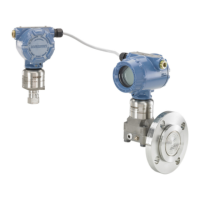
